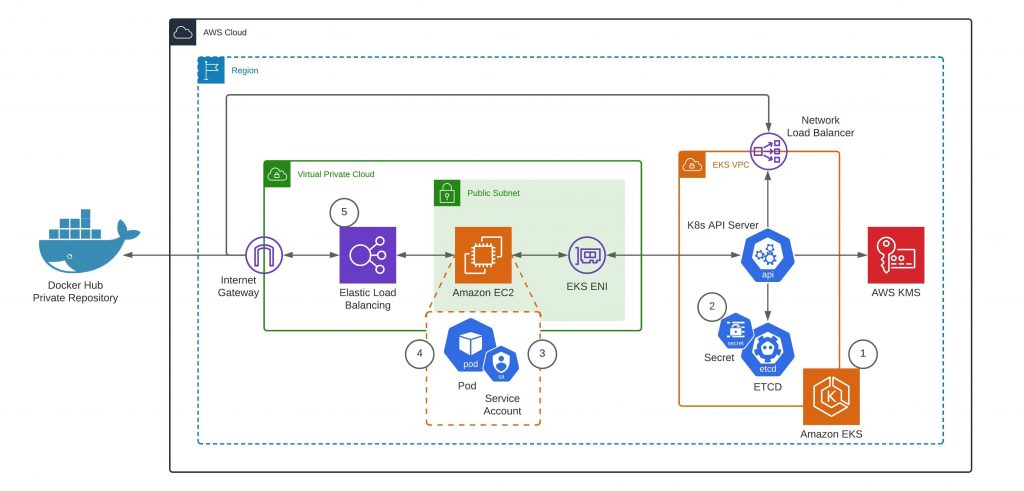Containers
Tag: Amazon ECS
Getting started with Consul service mesh on Amazon ECS
We recently announced the general availability of Amazon Elastic Container Service (Amazon ECS) service extension for Consul service mesh in AWS Cloud Development Kit (AWS CDK). This is a new integration that makes it easier for customers to use Consul as a service mesh on Amazon ECS. In this blog post, we show you how […]
Creating custom Amazon Machine Images with the ECS-optimized AMI Build Recipes
Customers running their container workloads on Amazon Elastic Container Service (Amazon ECS) have a choice of AWS Fargate and also using Elastic Compute Cloud (EC2) instances with the Amazon ECS-optimized AMI. One of the requests (issue #176) that our customers submitted, was to allow them to create their own ECS Amazon Machine Image (AMI). Today […]
Rolling EC2 AMI updates with capacity providers in Amazon ECS
When deploying containers to Amazon Elastic Container Service (Amazon ECS), customers have choices as to what level of management they want or need to have over the cluster compute. First there is AWS Fargate, which is a serverless compute engine that removes the need for customers to provision and manage servers. This approach simplifies the […]
Improving daemon services in Amazon ECS
When using Amazon EC2 for compute capacity in Amazon Elastic Container Service (Amazon ECS) clusters, a common pattern customers follow is to schedule a single instance of a task across all or select nodes in the cluster. This includes running tasks that handle log and/or metrics collection such as Fluentd or the DataDog agent, node […]
Managing compute for Amazon ECS clusters with capacity providers.
Customers running containers are often challenged with having to manage and understand how to run and scale the compute for their clusters. For customers taking advantage of Amazon Elastic Container Service (Amazon ECS) on AWS Fargate, the burden is lifted as the underlying compute layer is fully managed by AWS, enabling the customer to focus […]
Autoscaling Amazon ECS services based on custom CloudWatch and Prometheus metrics
Introduction Horizontal scalability is a critical aspect of cloud native applications. Microservices deployed to Amazon ECS leverage the Application Auto Scaling service to automatically scale based on observed metrics data. Amazon ECS measures service utilization based on CPU and memory resources consumed by the tasks that belong to a service and publishes CloudWatch metrics, namely, […]
Klook Case Study
About Klook: Klook, a world-leading travel activities and services booking platform, empowers travelers to discover and book on-demand local attractions, tours, transportation, food and exclusive experiences in more than 350 destinations around the world. More than 30 million people in over 180 markets use Klook’s website and award-winning app every month. Klook platforms support 41 […]
New look for Amazon ECS in the AWS Management Console
Recently we launched a new look and experience for Amazon ECS in the AWS Management Console. Since its launch in 2014, Amazon Elastic Container Service (Amazon ECS) has served as a simple way for customers to run production grade container workloads on AWS. Customers such as Disney+, Vanguard, Okta, Fidelity, and UbiSoft trust Amazon ECS […]
Using Windows Authentication with Linux Containers on Amazon ECS
This post shows how to configure a Linux container running on Amazon Elastic Container Service (Amazon ECS) to connect to a SQL Server database using Windows (or Integrated) Authentication. Windows Authentication is the recommended mechanism to connect to SQL Server databases, but using it can be challenging when running containerized workloads.
Authenticating with Docker Hub for AWS Container Services
Docker Hub has recently updated its terms of service to introduce rate limits for container image pulls. While these limits don’t apply to accounts under a Pro or Team plan, anonymous users are limited to 100 pulls per 6 hours per IP address, and authenticated free accounts are limited to 200 pulls per 6 hours. […]




